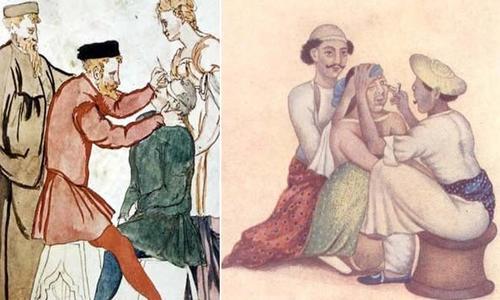As one of the oldest surgical procedures in history, cataract surgery has evolved tremendously over the years. The first documentation of the surgery was in fifth century BC, though to call it “surgery” may be a stretch. In ancient times, a technique called couching was used. Couching was performed when the lens was completely rigid and the eye was then struck with a blunt object so the lens would dislocate into the vitreous cavity. Of course, this only restored limited, unfocused vision.
Zooming forward in time, the most significant advancement in cataract surgery occurred in 1967 when Dr. Charles Kelman introduced the technique of phacoemulsification. In this technique, ultrasonography is used to break the cloudy lens into miniscule fragments that are then suctioned out. Now, eye surgeons could make much smaller incisions since the lens itself was broken into pieces as opposed to one big piece. Because of this new method, patients experienced faster recovery and no longer had extended hospital stays.
Just as the cataract surgery techniques advanced, the lens implant technology also improved. Because the incisions made were much smaller, lenses needed to be more flexible. Manufacturers began using materials like acrylic and silicon, which allowed the lens to be folded in order to fit through tiny incisions.
In today’s world, cataract surgery has even further progressed with the use of femtosecond lasers. Laser cataract surgery was first conceptualized in 2005 by D. Palanker and M. Blumenkranz and was later developed and tested by OptiMedica Corp. A 3-D image of the eye allows the surgeon to create a plan for the incisions at a specific location, depth, and length. The laser also opens the lens capsule and breaks the body of the lens into tiny fragments. The laser’s incredible accuracy and reproducibility improve all of these steps that were previously done by hand.
Lens improvements have continued to this day as well with ophthalmologists now being able to offer specific lens types that can correct for all types of vision inconsistencies, including astigmatism. No longer one size fits all, there are now many types of lenses to choose from which offer specific benefits.
Ophthalmologist Thomas Henderson, M.D. comments, “Throughout out our life, we are striving to perform better today than yesterday. Cataract surgery is an elegant example of continual and accelerating progress. Today, the ability to predict the needed power of a replacement lens is now the weakest link in achieving near perfect visual results. An individual eye will not tell us before the operation what power of lens will be perfect for it. Instead we carefully measure, calculate and operate, placing what we believe will be the perfect lens in the eye. Only then will the eye tell exactly what it wanted. Usually the result is great, but occasionally it is unsatisfactory because some currently unknowable factor made the eye need a significantly different lens. Today this uncommon but important problem must be managed by glasses, contact lenses, changing power of the cornea to match the lens implant, or changing out the lens implant to better match the needs of the eye. In the next few years, we likely will have a new and better option, the Calhoun Light Adjustable Lens. We will be able to adjust the power of a special lens implant very precisely to match the need of the eye by a laser treatment of the lens in the post-operative period.
Between now and then, we can look forward to better methods of calculation of needed implant power and further improved preoperative measurement, as well as wider use of measurement of power during the operation and continual subtle refinements of technique to reduce variation from the expected result as much as possible.
Seeking continual improvement is a valuable human trait. Reaching perfection is not humanly possible but the effort is worthwhile, bringing forth new ways and better results.”
For more information about traditional or laser cataract surgery, please contact us.

